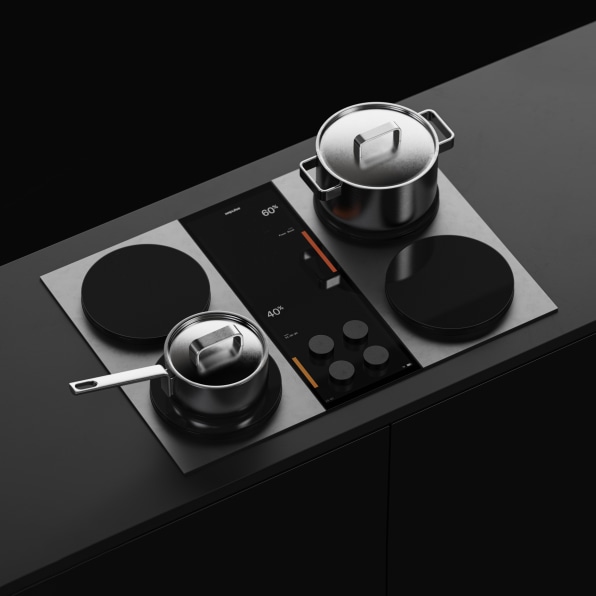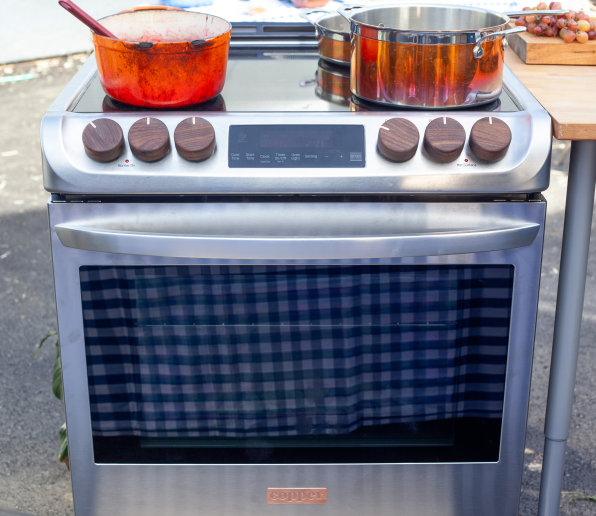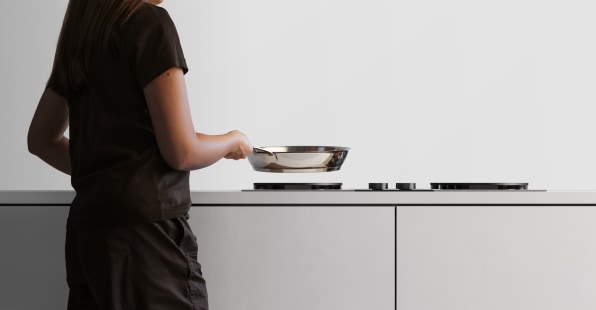|
- 3:00 AM
These new induction stoves want to convince you to ditch gas
Induction stoves are better for both the environment and indoor air. And now, they can deliver a superior cooking product as well.

Inside a large warehouse in Berkeley, California, a few days before Thanksgiving, a team of engineers is cooking a full holiday meal—turkey, stuffing, the works—on a stove they designed and plan to launch next year. The startup, Channing Street Copper Company, is working on a better version of an inductive stove. Across the bay in San Francisco, another startup called Impulse recently raised $20 million to work on the same challenge: At a time when the world needs to wean itself off fossil fuels, how do you convince people to give up their gas stoves?

Channing Street Copper Company, also known as Copper, is focused on one hurdle for people who want to make the switch—the fact that it often involves pricey rewiring if your house doesn’t already have a 220-volt outlet in place in the kitchen. “It ends up being incredibly expensive to switch from gas to induction because of the need to upgrade the electrical service in the kitchen and potentially the house as well,” says cofounder Weldon Kennedy. In the Bay Area, he says, it can cost as much as $20,000 to do the electrical work, much more than the cost of a high-end stove itself.

To tackle that problem, the team added a battery to its stove, which makes it possible to plug into a standard wall outlet. (The project spun out of Otherlab, a research and innovation lab, which did Department of Energy-funded research on battery-equipped appliances.) If the power happens to go out in an emergency, the battery means that the stove can keep working to cook around five meals; it can also help power a fridge or mobile phone.

Only around 5% of Americans have induction stoves now, partly because many people are convinced that gas stoves are superior. That perception is wrong, Kennedy argues. “Fossil fuel companies invested a huge amount in selling gas as kind of a luxury choice,” he says. The industry, which also coined the phrase “natural gas” to make gas sound cleaner, started promoting the slogan “cooking with gas” in the 1930s, and later ran ads where celebrities like Marlene Dietrich talked about how they preferred gas stoves. More recently, as more cities have considered bans on gas stoves in new buildings both for climate and health reasons, the industry has hired at least one public relations firm to pose as concerned neighbors on Nextdoor.
Induction stoves heat up pots magnetically with copper coils, unlike electric stoves, which heat directly and are harder to adjust while cooking. (Induction technology has a long history and was first introduced at the World’s Fair in 1933, and brought to market two decades later; the basic approach is still the same, but the latest models are more responsive, precise, and fast.) While older electric stoves have flaws, new induction stoves can now outperform gas. With a battery in place, water can come to a boil more quickly.

“We can boil a liter of water in about 40 seconds,” says Sam D’Amico, founder and CEO of Impulse, which is developing a battery-equipped induction stove. You can also instantly drop down to a low simmer. (It’s also possible to cook with a wok, he says, despite the lack of flames.) The company’s first product, a cooktop, is still in development, but he says there are other opportunities with the stove, like helping guide people through cooking steps to know where they are in a recipe. The stove could also potentially wirelessly power redesigned versions of appliances like air fryers that would look like cookware, and take up less space on countertops.
D’Amico, a consumer electronics engineer who was working on artificial and virtual reality at Facebook before pivoting to stoves, got into the space in part because he loves to cook. He initially envisioned a countertop pizza oven, realizing it would be possible to make a brick-oven style pizza in 90 seconds if the oven had a lithium battery. But then he saw the bigger opportunity of making a new induction stove, and pivoted. The company’s design also has dials, so it “looks like the UI/UX of a gas stove,” he says. “But under the hood, we’re able to do a lot more.”
If someone has a high-voltage connection, the battery can also double as energy storage at key parts of the day. In California, for example, there’s extra solar power midday, and the stove can help take it in and then push it back out later when it’s needed. “Effectively, we’re Trojan-horsing a small battery into people’s homes when the appliance goes in,” D’Amico says.
Having batteries of a certain size (larger than 3 kilowatt-hours) means that both the Impulse and Copper products will qualify for extra incentives from the new federal Inflation Reduction Act. Some cities and states also offer incentives for consumers. Copper recently opened a waitlist for preorders for its stove, which is slated to be out next spring, for $5,999; but with incentives, it can drop to $4,250, Kennedy says. (While gas stoves vary widely in price, some high-end stoves cost at least that much.) Impulse hasn’t yet announced a price and plans to share more next year.

Some people may choose to make the switch for environmental reasons; one recent Stanford study found that the methane leaking from U.S. stoves, alone, is comparable to the CO2 emissions from half a million cars. There’s also increasing evidence of the health risk of burning gas in your kitchen, as a stove emits pollutants like carbon monoxide, nitrogen oxide, formaldehyde, and particulate matter. Nitrogen oxide is linked to a higher risk of asthma in children. Having a gas stove in the house is comparable to growing up with a parent smoking inside.
“I have a 15-month-old,” Kennedy says. “And now being in this business and constantly reading about the incredible health risks, particularly for young kids around, from air quality issues—I mean, a 42% increase in childhood asthma in homes burning fossil gas—it’s terrifying.”
But others may soon switch just because they want a better stove. “It’s getting to a point where the environmental options are the better options, versus there’s some compromise, like my straw dissolves in my drink or something like that,” D’Amico says. “I think paper straws are the counterpoint of what we’re doing. The product is good, and it’s good for the environment.”



No comments:
Post a Comment